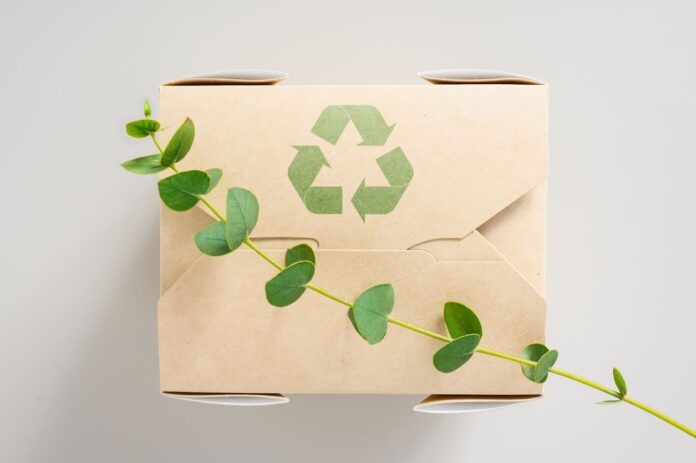In today’s business and financial world, sustainability is no longer an option, but a necessity. Companies are increasingly assessed on their environmental impact and their ability to integrate innovative and sustainable practices into their operations. One of the most visible aspects of this shift is the trend towards sustainable packaging. But how can you as a company apply this trend without sacrificing quality and efficiency? In this article we explore how you can integrate sustainable packaging trends into your business strategy.
The importance of sustainable packaging
Sustainable packaging trends are not just about reducing waste; it is also a way to position your brand as a responsible and forward-looking company. Consumers are increasingly aware of the environmental impact of their purchases and often prefer products that are packaged in an environmentally friendly way. By investing in sustainable packaging, you can not only reduce your environmental footprint, but also build a positive brand image and differentiate yourself from the competition.
Trends in sustainable packaging
There are several sustainable packaging trends to consider:
- Biodegradable materials: choose packaging made from materials that break down naturally, such as plant-based plastics or recycled paper.
- Reusable packaging: encourage customers to reuse packaging by, for example, offering deposit systems or return programs.
- Minimalist design: Reduce the use of materials by choosing a simple and functional packaging design that produces less waste.
- Local production: By producing packaging locally, you can reduce CO2 emissions from transport and support local economies.
The role of dropper bottles in sustainable packaging
A specific example of sustainable packaging is the use of dropper bottles. These bottles are ideal for accurately dosing liquids and can be made from durable materials such as glass. Glass is fully recyclable and can be reused infinitely without loss of quality. By choosing glass dropper bottles you can improve both the precision of your product and your sustainability goals.
Implementation in your company
To effectively implement sustainable packaging trends, you need to take a strategic approach:
- Analyze your current packaging: take a critical look at the packaging you currently use and identify areas where improvements can be made.
- Set clear goals: determine what you want to achieve with sustainable packaging and set measurable goals.
- Involve your stakeholders: communicate your sustainability goals with suppliers, customers and employees to create support.
- Monitor and report: Track progress and report on your efforts to ensure transparency and accountability.
Circular Economy and Its Role in Packaging
The circular economy is one of the most thrilling advancements in sustainable packaging. The circular economy is based on the principles of repurposing, reprocessing, and regenerating resources, in contrast to the traditional linear economy, which involves the use of resources to produce a product and then its disposal. Packaging is essential in this system because it is either recycled into new products or designed to be a component of a closed-loop system, in which materials are used repeatedly with minimal waste.
For example, loop packaging systems are experiencing growth, as they enable consumers to return used packaging for cleansing and repurposing. By incorporating your packaging into a circular economy model, your business can establish a strong, eco-friendly brand image and reduce its environmental impact. In fact, forward-thinking organizations can establish a return-and-reuse system that is seamless by collaborating with recycling organizations and third-party partners. Incentives such as discounts or loyalty points can be offered to encourage consumer participation.
Technology-Driven Solutions for Sustainable Packaging
The function of technology is another critical factor to consider when integrating sustainable packaging into your strategy. Smart packaging, biodegradable polymers, and digital tracking systems are among the innovations that are assisting companies in improving their sustainability. Smart packaging may incorporate technologies such as QR codes or RFID devices, which enable consumers to monitor the environmental impact of the packaging, obtain recycling information, or even gain insight into the product’s sourcing and production.
Furthermore, companies are now capable of developing packaging solutions that are more environmentally friendly due to advancements in material science and 3D printing. The waste generated during production is reduced by the precise customization enabled by 3D printing. Simultaneously, novel materials such as mycelium-based packaging (derived from mushrooms) or seaweed-based plastics are biodegradable and have the potential to completely supplant conventional plastics.
Regulatory and Industry Trends: Adapting to Changing Policies
In numerous markets, sustainability is no longer an option; rather, it is frequently a prerequisite for businesses. Packaging waste, recycling, and materials are being subjected to increasingly stringent regulations by governments and international regulatory bodies. For example, the Packaging Waste Directive of the European Union has established objectives to mitigate the environmental impact of packaging. This directive encourages companies to incorporate recycled materials and simplify the recycling process.
Businesses must be cognizant of forthcoming legislation and industry standards in order to remain abreast of these regulatory obligations. Companies can potentially access new markets that prioritize eco-friendly practices and avoid penalties by adhering to these regulations. In industries that are becoming more competitive as a result of stricter environmental expectations, this proactive approach can be a significant differentiator.
Partnering with Sustainable Packaging Suppliers
One method of seamlessly incorporating sustainable packaging into your business is to form partnerships with suppliers who already prioritize sustainability. These suppliers frequently provide environmentally favorable packaging materials, including compostable plastics, biodegradable labels, and recycled paper, which can significantly mitigate your environmental impact. Working with suppliers who possess certifications such as the Forest Stewardship Council (FSC) for paper products or the Cradle to Cradle certification for materials guarantees that your packaging is consistent with the most effective sustainability practices.
In addition, optimizing your supply chain can be achieved by collaborating with suppliers who are dedicated to reducing carbon emissions during the production process. You may also be able to develop co-branded marketing campaigns that emphasize your shared dedication to sustainability, thereby improving your brand’s reputation among environmentally conscious consumers.
Marketing Your Sustainability Efforts
After incorporating sustainable packaging trends into your business strategy, it is imperative to inform your customers of these modifications. Authenticity and transparency are indispensable. Businesses that are transparent about their sustainability initiatives can cultivate trust and loyalty among consumers who desire to ensure that their purchasing decisions are ethical.
We recommend that you establish a specific section on your website that emphasizes your sustainability initiatives. This may encompass comprehensive analyses of the materials you employ, the measures you are implementing to minimize waste, and the consequences of your packaging decisions. Furthermore, you may incorporate sustainability insignia or certifications into your packaging and products to guarantee that consumers can promptly determine which products are consistent with their values.
An additional alternative is to implement sustainability-oriented marketing campaigns that involve the dissemination of narratives regarding the brand’s efforts to mitigate its environmental impact. Through the presentation of behind-the-scenes initiatives, it is possible to forge a more profound connection with consumers, thereby converting them into advocates for your sustainable brand.
Employee Involvement in Sustainability
It is imperative to involve your employees in the process in order to completely integrate sustainable packaging into your business strategy. Sustainability should not be solely a top-down initiative; it necessitates employee commitment and buy-in at all levels of the organization. Developing a culture of environmental responsibility can be achieved by educating your team on the significance of sustainable packaging, setting internal objectives, and encouraging participation.
Additionally, you may establish sustainability committees or task forces that are led by employees and are dedicated to the ongoing enhancement of your packaging choices. When employees are emotionally invested in the organization’s objectives, they are considerably more inclined to advocate for sustainable practices and contribute to its overall prosperity.
Continuous Innovation and Adaptation
Lastly, it is crucial to bear in mind that sustainability is a continuous process. As new technologies, materials, and regulations emerge, packaging trends will continue to evolve. Your business must be receptive to ongoing innovation and adaptation in order to remain competitive. To remain at the forefront of the industry, it is crucial to conduct regular evaluations of your packaging strategy and allocate resources to research and development.
Your company can guarantee the sustainability and effectiveness of its packaging strategy by anticipating changes in consumer preferences and regulatory requirements through a commitment to innovation.
Conclusion: A Sustainable Future for Your Business
It is not merely an ethical decision to incorporate sustainable packaging trends into your business strategy; it is a strategic one. There are numerous methods to enhance your brand image while reducing your environmental impact, including the adoption of biodegradable materials, the adoption of circular economy models, and the utilization of technological advancements. In a market that is becoming increasingly eco-conscious, your business can prosper by remaining informed, engaging stakeholders, and remaining receptive to continuous innovation.
In the long term, sustainability will not only set your brand apart but also contribute to a healthier planet for future generations. It is now imperative to implement sustainable packaging as a fundamental component of your business strategy.




































































